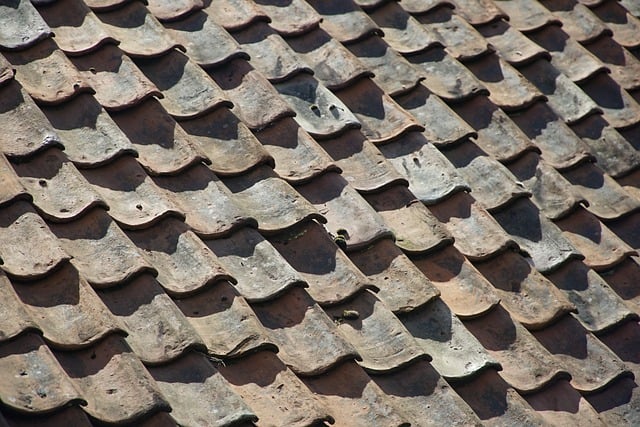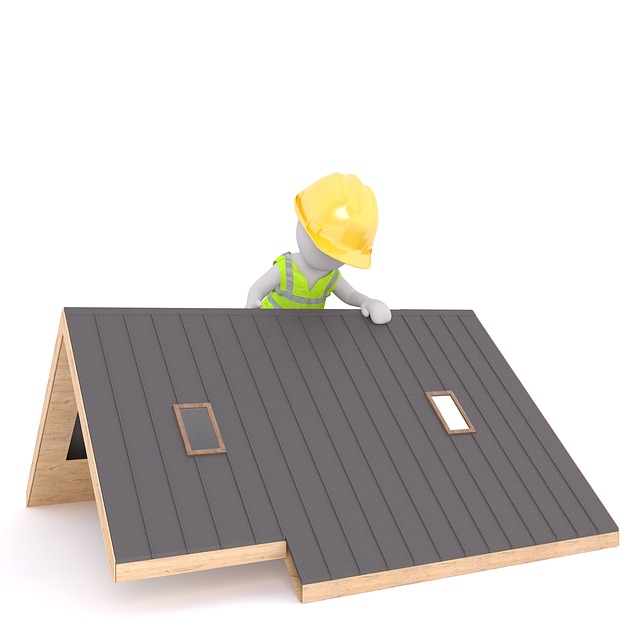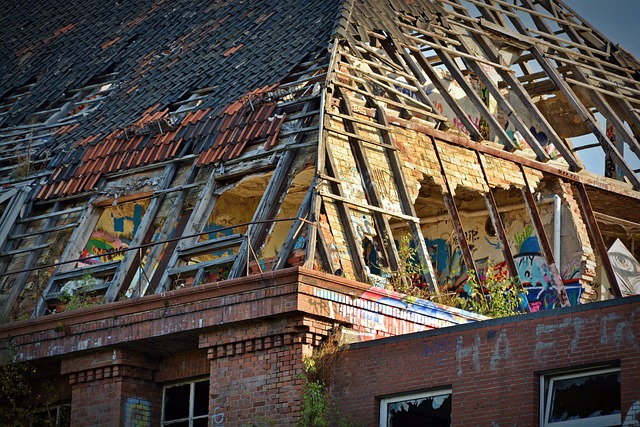Full-service roof installation offers a complete solution for homeowners, from assessment to final inspection. This includes meticulous planning, expert craftsmanship, thorough cleanup, and compliance with local building codes. Key benefits include convenience, expertise, high-quality workmanship, durable roofs, and long-term cost savings. The process involves removing old materials, inspecting structural integrity, installing underlayment, flashing, vents, and placing shingles or slates. Regular maintenance and inspections are crucial for maximizing roof performance. Choosing the right materials based on climate, budget, and aesthetics ensures structural integrity and energy efficiency. Safety practices, high-quality materials, and adherence to building codes prevent water damage and costly repairs. Routine upkeep, including cleaning gutters and conducting visual inspections, extends the lifespan of a newly installed roof. Technology, such as drones and advanced design software, streamlines projects and enhances communication between contractors and homeowners.
“Elevate your home or business with a seamless full-service roof installation—a comprehensive solution that simplifies the complex process. This guide navigates the entire journey, from initial assessment to final touches, ensuring a robust and durable roofing system. Discover the myriad benefits of hiring specialized providers, who offer expertise in materials selection, safety protocols, and best practices. Learn from common mistakes, master maintenance tips, and explore how technology is revolutionizing this traditional craft. Optimal roof installation is within reach with these insightful insights.”
Understanding Full-Service Roof Installation: A Comprehensive Overview

Full-service roof installation refers to a complete package offered by roofing professionals, encompassing every aspect of replacing or installing a new roof. It’s not just about laying down shingles; it involves meticulous planning, expert craftsmanship, and thorough cleanup. This comprehensive approach ensures a seamless experience for homeowners, providing peace of mind throughout the entire process.
Such services typically include assessment and inspection to determine the best roofing solution, material selection based on individual needs and preferences, precise measurement and estimation for materials, skilled labor for installation, and finally, thorough testing and quality assurance checks. Additionally, full-service providers handle obtaining permits, managing project timelines, and ensuring compliance with local building codes—simplifying the often complex roof installation process for homeowners.
Benefits of Hiring a Full-Service Roofing Provider

Hiring a full-service roofing provider offers numerous advantages for both residential and commercial property owners. One of the key benefits is convenience; these professionals handle every aspect of roof installation, from initial assessment and planning to materials procurement, labor, and final inspection. This comprehensive approach ensures a seamless experience, saving homeowners and business owners valuable time and effort.
Additionally, full-service roofing companies bring expertise and specialized knowledge that can be hard to match. They stay updated with the latest industry standards, safety protocols, and technological advancements in roof installation. This expertise translates to better quality workmanship, durable and high-performance roofs, and long-term cost savings through efficient problem-solving and preventive maintenance.
The Process: From Initial Assessment to Final Completion

The process of full-service roof installation involves a series of meticulous steps, ensuring a robust and durable new roof. It begins with an initial assessment where our experts inspect your property, evaluating the current state of your roof, identifying any damage or potential issues, and discussing your needs and preferences. This crucial step sets the foundation for the entire project, allowing us to tailor solutions that meet your specific requirements.
Once the planning is in place, the installation process kicks off with the meticulous removal of the old roofing material, followed by a thorough inspection of the roof structure. Our skilled technicians then prepare the surface, ensuring it’s ready for the new roofing system. This includes installing underlayment, flashing, and any necessary vents or drip edges. The actual roofing involves carefully placing each tile, shingle, or slate, securely fastening them in place according to industry standards. Finally, a thorough inspection is conducted upon completion, guaranteeing a high-quality, leak-free roof that stands the test of time.
Key Components of a Successful Roof Installation Project

A successful roof installation project hinges on several key components. Firstly, proper measurement and design are crucial. Accurate measurements ensure the new roof suits your home or building perfectly, while a well-designed plan incorporates factors like local climate, architectural style, and structural integrity. Using high-quality materials is another vital component; durable shingles, underlayments, and flashing protect against leaks and extend the roof’s lifespan.
Skilled and licensed installers play an indispensable role in a successful project. Their expertise guarantees proper installation techniques, ensuring water tight seals, secure fastening, and adherence to safety standards. Regular maintenance and inspections are also essential, helping to identify potential issues early on and prolonging the roof’s overall performance.
Choosing the Right Materials for Your Roofing Needs

When undertaking a roof installation or repair, selecting the appropriate materials is paramount. The right roofing solution not only ensures structural integrity but also contributes to energy efficiency and longevity. For instance, asphalt shingles are a popular choice for their affordability and ease of maintenance, while metal roofing offers superior durability and resistance to extreme weather conditions. Consider your climate, budget, and aesthetic preferences when making this crucial decision. A professional roofer can guide you in choosing the optimal materials tailored to your specific roof installation needs.
Safety Measures and Best Practices in Roof Installation

When undertaking a roof installation, safety should always be the top priority. Proper measures and best practices must be followed to ensure the well-being of both the workers and the homeowners. This includes wearing appropriate personal protective equipment (PPE), such as hard hats, safety glasses, and gloves. The work area should be clearly marked and secured to prevent accidental access during installation. Additionally, ensuring proper ventilation and following manufacturer guidelines for handling and installing materials are crucial steps in the process.
Best practices extend beyond individual safety to encompass the overall quality of the installation. This involves using high-quality materials that meet industry standards and complying with local building codes and regulations. Proper sealing and flashing techniques should be employed to safeguard against water damage, while regular inspections at various stages of the project ensure any issues are addressed promptly. These measures contribute not only to a safer work environment but also result in a more durable and reliable roof for the property.
Common Mistakes to Avoid During Roof Installation

During roof installation, several common mistakes can lead to costly repairs and reduced lifespan of your new roof. One of the most frequent errors is improper ventilation, which can cause moisture buildup and damage to the roofing materials. It’s crucial to ensure adequate ventilation along the entire ridge line and in all valleys, addressing any leaks or blockages before installing new shingles.
Another mistake to avoid is using subpar materials or skimping on labor. Cheap roofing products may look appealing upfront but often fail to withstand harsh weather conditions, leading to leaks and structural damage over time. Similarly, hiring unskilled workers can result in poor installation, leaving your roof vulnerable to future problems. Always opt for high-quality materials and experienced professionals for a durable and long-lasting roof installation.
Maintenance Tips for Newly Installed Roofs

A newly installed roof requires proper care and regular maintenance to ensure its longevity. Here are some essential tips for homeowners with a fresh roof installation:
Start by keeping your roof clean and free from debris. Regularly removing leaves, branches, and other particles prevents blockages in gutters and drains, which can lead to water damage during heavy rainfall. Additionally, inspect your roof visually at least twice a year for any signs of damage, missing or damaged shingles, or flashing issues. Early detection of these problems can save you from costly repairs later. Remember, regular maintenance is key to extending the life of your roof and maintaining its protective barrier against the elements.
The Role of Technology in Modern Full-Service Roof Installation

In today’s digital era, technology plays a pivotal role in transforming the landscape of full-service roof installation. Advanced tools and software are revolutionizing how professionals approach roofing projects. For instance, drones equipped with high-resolution cameras offer precise assessments of roof damage or the scope of a renovation, enabling efficient planning and cost estimation.
Digital design software allows for the creation of detailed 3D models, providing clients with a clear visualization of their new roofs before installation. This technology enhances communication between contractors and homeowners, ensuring everyone is on the same page. Additionally, automation in manufacturing processes ensures that roof components are produced with enhanced precision, leading to more durable and leak-resistant installations.
